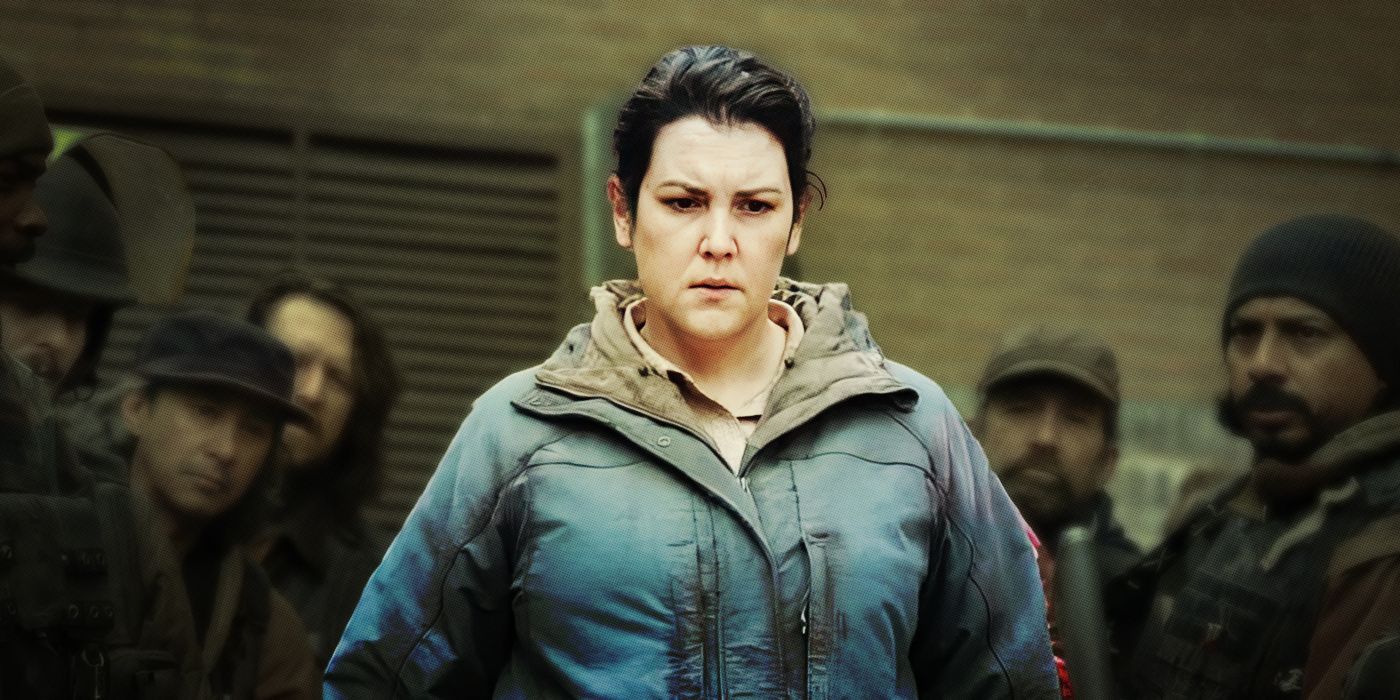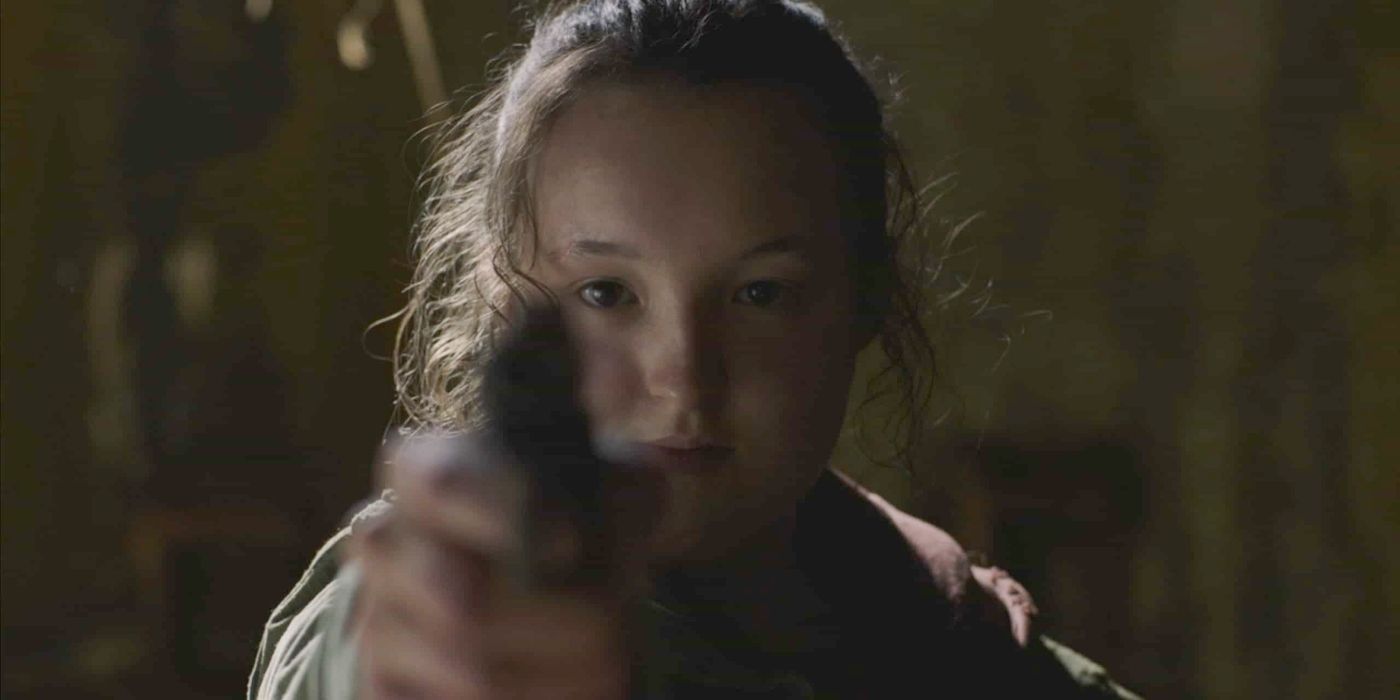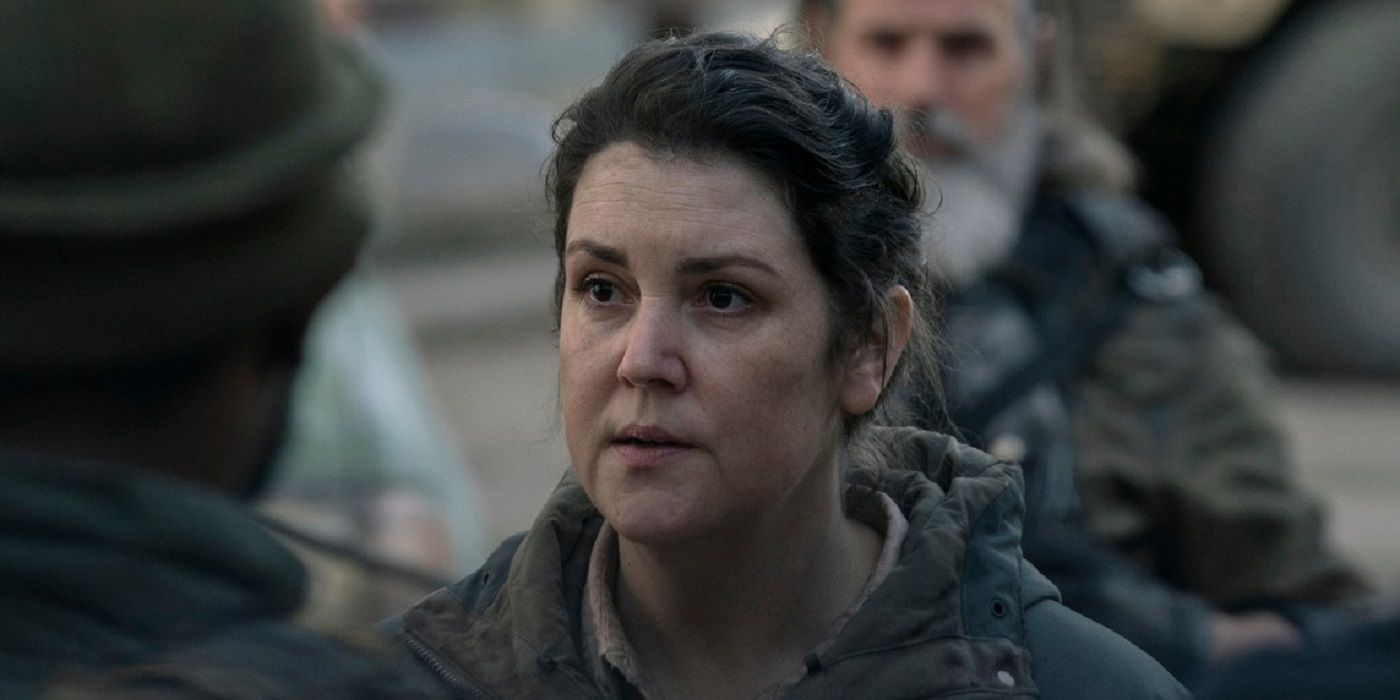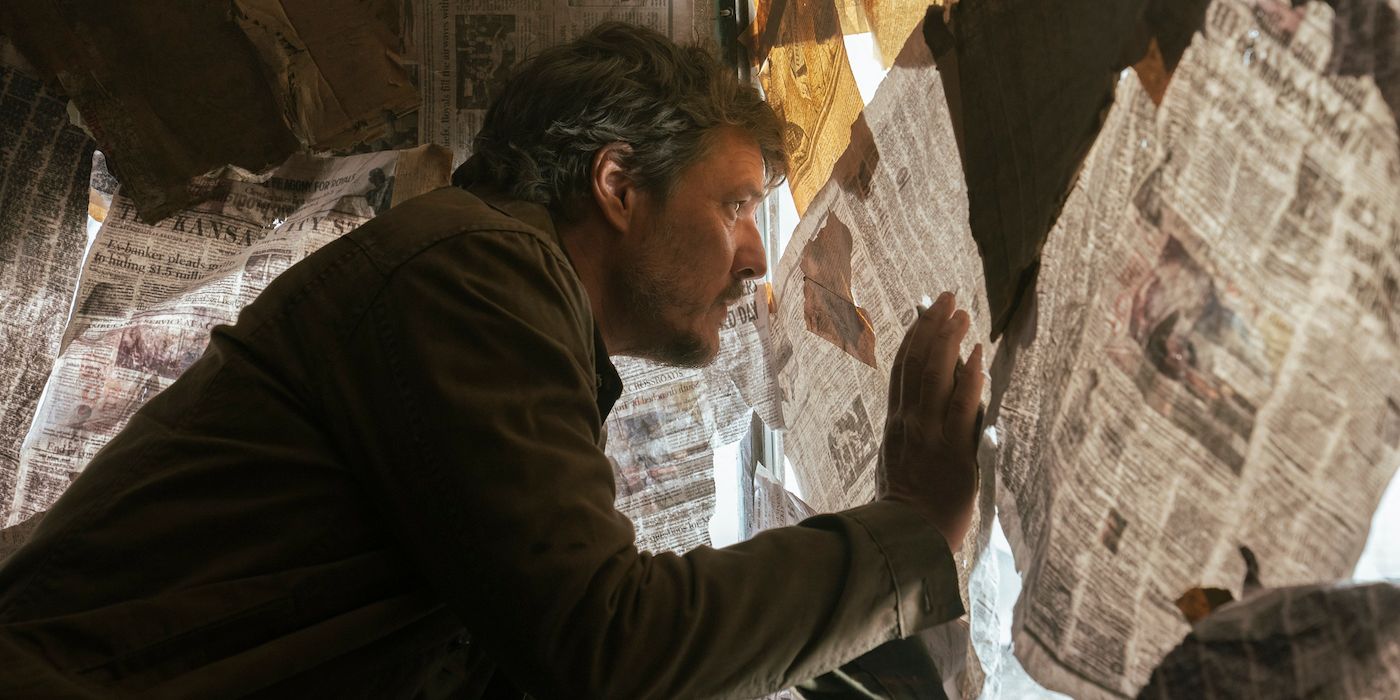Editor's Note: The following contains spoilers for Episode 4 of The Last of Us. In “Please Hold to My Hand,” the fourth episode of HBO’s The Last of Us, the primary danger came not from fungal zombies, but from all too human person-to-person violence. From Joel (Pedro Pascal) and Ellie’s (Bella Ramsey) Kansas City ambush and its agonizing aftermath to Kathleen (Melanie Lynskey) executing her prisoner, the real threat came from other people. But in each case, the actual violence is kept mostly out of frame — time and again, we hear the sounds but don’t see the carnage, sticking instead with either the perpetrator or a bystander. By leaving the physical violence, but not the survivors’ reactions, to our imaginations, The Last of Us emphasizes the cost — or the ease — of taking another life in this harsh new world.
Joel and Ellie’s Road Trip and Ambush
After the relative calm of “Long, Long Time,” “Please Hold to My Hand” thrusts us and its protagonists right back into the fray. As Joel and Ellie barrel across the country in Bill’s (Nick Offerman) truck, they get some of the previous episode’s peace for themselves — sleeping (or keeping watch) under the stars, giggling at a collection of awful/hilarious puns (“What did the mermaid wear to math class? An algae-bra!”), and savoring 20-year-old Chef Boyardee. But when they hit Kansas City, there’s a problem — an abandoned truck and a skeleton-strewn pileup block the highway tunnel, forcing them to cut through the city. The close quarters prove more dangerous than the open road, and Ellie and Joel are soon ambushed, forced first into a firefight and then to the 33rd floor of an abandoned building, seeking a place to wait out the danger before they can be back on their way.
Three Major Moments of Offscreen Violence
When the truck is ambushed, we’re right there with Joel and Ellie in the thick of the fight; their antagonists are nearly faceless to us, just a hail of bullets and a volley of shouted threats. When Joel sends Ellie through a hole in the wall to get her out of immediate danger, we stick with her, not with the fight, witness to her uncertainty and fear as the fight rages on the other side of the plaster. When we hear — but don’t see — the decisive gunshot, it’s Ellie’s face we’re watching in the panicked few moments before we know whether Joel was shot or the shooter. The violence itself is secondary to the frightful ambiguity in its wake, and to the relief when it becomes clear that it was them, not us, who lost out.
But that black-and-white, better-us-than-them mentality is complicated moments later when Joel is surprised by a third attacker, whose name, we’ll learn, is Bryan (Juan Magana). When Ellie sees that Bryan is close to choking Joel to death, we stick with her as she decides to climb out of the wall, as she decides to pull out her secret gun, and as she decides to pull its trigger. We don’t see the bullet’s impact. It’s Ellie’s face we stick with through it all, charting the choices and calculations that lead her to that moment of violence. She did indeed shoot Bryan, but it wasn’t fatal — which means we stay with Ellie once again while she hustles back behind the wall. We stay with her as she listens to Bryan’s agonized and terrified screaming, to his pleas for his mom, to the awful sound of a knife sinking into flesh — and then to the silence that follows. Bryan is no longer the faceless antagonist in a shootout, and by staying close to Ellie we have to face with her the terrible, if necessary, ramifications of her shot.
The third time someone is killed, though, it’s not Ellie we follow, but Kathleen, a new character who seems to be in charge of the rebel forces that have captured Kansas City. When we first meet the deceptively sweet-faced leader, she’s interrogating a doctor (John Getz) — her family doctor, in fact, who delivered her as a baby. When he won’t give her the information she seeks, she holds a gun to his head, eyes wet, hesitating to pull the trigger. But after Bryan’s body is delivered to her, she returns to the cell, calmly orders it opened, and shoots the doctor without a second thought. Once again, we stay with Kathleen, not with her victim, who is hidden inside the metal walls of the cell. We are asked to reckon with her absolute decisiveness and cool — the doctor doesn’t even have time to cry out for mercy like Bryan did before she’s done the deed and is on her way to her next task.
Imagined Violence Charts a Psychological Journey
The cumulative effect of this offscreen violence is more horrifying than if we saw the bloody effects of it all, as keeping it off-camera lets our imagination do the work. It also forces us into the position of witness or perpetrator, refusing to let graphic onscreen violence distract us from the psychological effects of living through or delivering it. In each case, we are given time with the victim to humanize them — we know Joel, and we worry about him, helping us identify with Ellie’s fear at that first gunshot. We see and hear Bryan’s overwhelming terror, which makes it impossible to dismiss him as a simple and expendable bad guy as we listen to his agonized final moments. And before Kathleen’s decisive shot, we get an entire exchange between her and the doctor, elegantly parceling out their history, reminding us of a world (and positing a Kathleen) before this one. We don’t have to see the gory deaths to feel their horror. By letting us connect with these characters as humans, even briefly, the show asks us to reckon with what it means to snuff them out, to sit in their absence, and to feel the way each act of violence chips away at the humanity of those who live on behind them.
And that choice to stay with the bystanders and perpetrators rather than the victims is what helps The Last of Us become a complicated psychological journey rather than a hyper-violent misery parade. By placing focus firmly on the survivors, the show asks questions about what it costs to stay alive in this world. What must be sacrificed in order to do so? “Long, Long Time” showed us one reason it might be worth it. Joel offers another in this episode, telling Ellie that “You keep going for family. That’s about it.” But by keeping focus first on Ellie’s journey from witness to the perpetrator and then on Kathleen’s coldbloodedness, the show is also offering a warning. How many more chips at Ellie’s humanity would it take before she too becomes a person who could shoot a neighbor without a second thought? How many times did Kathleen sit stock still behind a wall, listening to the carnage on the other side? How many times did she pull a trigger before her hand stopped shaking, before she stopped missing, before she stopped hesitating?
Joel is painfully aware of the dangerous psychological road Ellie stepped onto when she pulled the trigger, and he’s sorry for being the reason she had to make that choice. It’s why he sends her (and us) away before stabbing Bryan to death — he knows that both the sight of the violence and the way it could desensitize her are equally ruinous. By refusing to let us get inured to onscreen violence, The Last of Us is making a similar choice; it shields us from the gore, but not from the screams, and not from what it means to go on after they’ve stopped ringing, knowing we’ll probably have to do it again if we want to keep going. It wasn’t, after all, the first time Ellie’s hurt someone. Nor was it Joel’s, or Kathleen’s. It won’t be anyone’s last.
Read More About ‘The Last of Us’:
- 'The Last of Us' Movie by Sam Raimi That Never Happened
- Every Character in 'The Last of Us' Series Who Is Not in the Games
- 'The Last of Us': Every Zombie Type Explained, From Runners to Bloaters




